A WEB FOR EVERYONE
DESIGNING ACCESSIBLE USER EXPERIENCES
Sarah Horton and Whitney Quesenbery
Rosenfeld Media
Brooklyn, New York
A Web for Everyone
Designing Accessible User Experiences
By Sarah Horton and Whitney Quesenbery
Rosenfeld Media, LLC
457 Third Street, #4R
Brooklyn, New York
11215 USA
On the Web: www.rosenfeldmedia.com
Please send errors to:
Publisher: Louis Rosenfeld
Managing Editor: Marta Justak
Interior Layout: Danielle Foster
Cover Design: The Heads of State
Cover Illustration: The Heads of State
Artwork for Personas: Tom Biby
Indexer: Sharon Shock
Proofreader: Sue Boshers
2013 Sarah Horton and Whitney Quesenbery
All Rights Reserved
ISBN: 1-933820-97-7
ISBN-13: 978-1-933820-97-2
LCCN: 2013944511
Printed and bound in the United States of America
This book is dedicated to the many hardworking
and dedicated people for whom a web for everyone
is a professional goal, a personal mission,
and a daily endeavor.
HOW TO USE THIS BOOK
Who Should Read This Book?
You may be a web or user experience designer, thinking about what makes a product appealing to many people or how to meet the needs of a niche audience. You may be a programmer just handed a list of accessibility coding issues that need repair. You may be a team lead with a mandate from leadership to make accessibility a product differentiator. You might have learned that your organization is under scrutiny from disability rights organizations. You may be an advocate for people with disabilities, looking for ways to make a case for accessibility to a product design team.
No matter your title or skills, you are probably a member of a team that brings together many skills and roles to the task of building products. And you are thinking about accessibility. For accessibility thinking, you need to understand how your work fits with the work of others on your team, and how your decisions and actions affect millions of people around the world who use the web.
This book will help you get started with accessibility or provide a structure for your accessibility thinking. It offers a framework composed of accessible user experience principles and guidelines that will help you create websites and web applications that are accessible for everyone.
Whats in This Book?
lays out the accessibility equation and a framework of principles and guidelines for an accessible user experience. The framework is formed from three bodies of work: the Web Content Accessibility Guidelines (WCAG 2.0), the Principles of Universal Design, and the concepts behind Design Thinking.
introduces a group of personasrealistic but fictional characters that appear throughout the book to show how accessible design can have an impact on peoples lives.
cover accessible user experience principles. We start each chapter with an example that demonstrates how the principle is enacted in the real world and why it is important for the web. Then we detail how to achieve the principle through supporting guidelines related to strategy, design, content, and coding. We include information about who is responsible and list the relevant WCAG 2.0 principles, guidelines, and success criteria. At the end of each chapter, we profile a leader in the area of accessible design.
The principles are:
provides guidance for how to weave accessibility best practices into the fabric of your organization. A web for everyone will become a reality when accessibility is a core value and is considered just part of making things.
takes a look at what it might mean to have a web for everyone, before sending you off to your own journey into the future, to play your part.
There are three appendixes. The first is a list of the accessible user experience principles and guidelines in this book, as a handy reference. The second maps the WCAG 2.0 principles, guidelines, and success criteria to the Accessible UX principles and guidelines to help organizations aiming to meet the standard. Finally, there is a comprehensive reading list.
What Comes with This Book?
This books companion website ( rosenfeldmedia.com/books/a-web-for-everyone/) contains some templates, discussion, and additional content. The books diagrams and other illustrations are available under a Creative Commons license (when possible) for you to download and include in your own presentations. You can find these on Flickr at www.flickr.com/photos/rosenfeldmedia/sets/.
rosenfeldmedia.com/books/a-web-for-everyone/) contains some templates, discussion, and additional content. The books diagrams and other illustrations are available under a Creative Commons license (when possible) for you to download and include in your own presentations. You can find these on Flickr at www.flickr.com/photos/rosenfeldmedia/sets/.
FREQUENTLY ASKED QUESTIONS
Im not a designer (or Im not a developer), so why should I read this book?
Its difficult to imagine a context in which one person could take a product, from soup to nuts, and make it accessible. There are so many decisions to be made, and accessibility must be considered at every step along the way. A designer or developer cant make accessibility happen alone.
If the decisions you make as part of your work impact someones experience of a digital product, you need to know how to make decisions that will not result in accessibility issues.
If you are leading an organization or a team, you may need to shake things up and change how you do business in order to achieve accessibility. You cant just tack it on and hope it sticks. You need everyone to change their processes to make accessibility part of their practice. looks at putting accessibility into practice.
This isnt part of my job description, so whose job is it?
The simple answer is that we are all responsible for making our part of a project accessible. Rather than try to list all the different roles, titles, and skills, we identify three big groups:
Design: How will we create a great user experience for all?
Design includes all of the disciplines of UX and web design: information architecture, interaction design, information design, graphic design, and content strategy.
Content: What does the product say, and how does it say it?
Content includes the ongoing work to plan and produce text, images, audio, videoall the information in the site or app.
Development: How is the product built?
Development includes programming, coding, scripting, markup, as well as the templates and stylesheets that content authors use.
In , we identify both who has the primary responsibility for each aspect of accessibility and how all the other roles support it.
How big an issue is accessibility anyway?
The U.S. Census Bureau says that over 47 million Americans have a disability of some kind. The UN and the World Bank say this adds up to 650 million people worldwide. Thats around 10% of everyone in the world.
At some point in our lives, disability will affect most of us, no matter who we are, especially as we get older. By the time we retire, over 30% of us will have some disability, even if it is minor.
To put a face on these numbers, weve created a set of personas of web users. They dont represent everyone, but they will introduce you to some of the ways people with disabilities use the web. Youll meet them in .
Im already doing responsive
design. Isnt that enough?
Working to standards and responsive design are both important criteria for accessibility. One way to think about accessibility is that assistive technologies, such as screen readers and alternate keyboards, are just another kind of device. When a site is designed to be flexible, it works better on all devices. covers how to support accessibility with a solid structure.
Next page

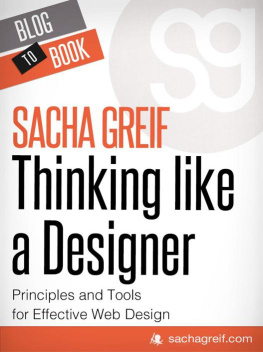
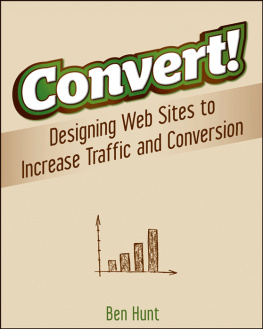
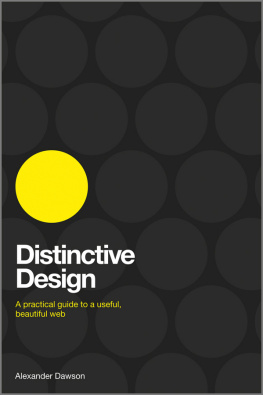
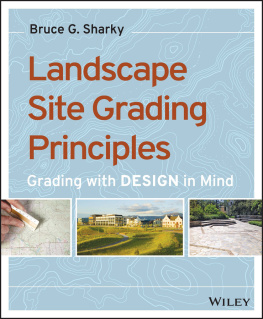
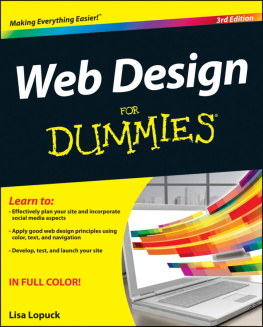
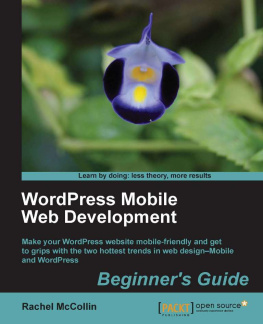
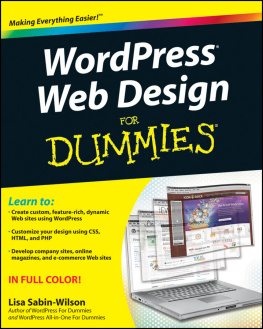
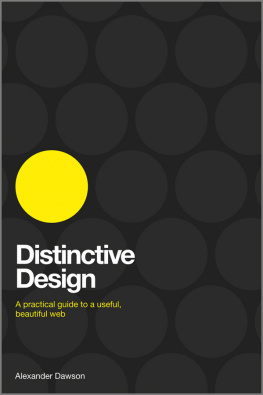

 rosenfeldmedia.com/books/a-web-for-everyone/) contains some templates, discussion, and additional content. The books diagrams and other illustrations are available under a Creative Commons license (when possible) for you to download and include in your own presentations. You can find these on Flickr at www.flickr.com/photos/rosenfeldmedia/sets/.
rosenfeldmedia.com/books/a-web-for-everyone/) contains some templates, discussion, and additional content. The books diagrams and other illustrations are available under a Creative Commons license (when possible) for you to download and include in your own presentations. You can find these on Flickr at www.flickr.com/photos/rosenfeldmedia/sets/.